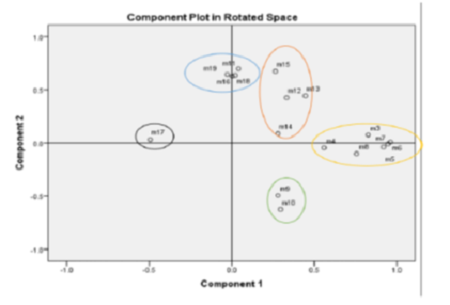


Indian Journal of Science and Technology
DOI: 10.17485/IJST/v15i20.2381
Year: 2022, Volume: 15, Issue: 20, Pages: 989-1000
Original Article
Walid Mahmoud Khalilia1*, Ruba Abuamsha2, Nisreen Alqaddi1, Abdallah Omari3
1Faculty of Higher Studies and Scientific Research, Al-Istiqlal University (PASS), Jericho, Palestine
2Department of Applied and Molecular Biology, Technical Univesity-Kadoorie (PTUK), Tulkarm, Palestine, Palestine
3Palestinian National Agricultural Research Center (NARC), Jenin, Palestine
*Corresponding Author
Email: [email protected]
Received Date:21 December 2021, Accepted Date:02 February 2022, Published Date:06 June 2022
Background: This study aimed to evaluate the phenotypic diversity of Date Palm cultivars grown in Jericho region in Palestine, in order to identify and preserve the most economically and environmentally feasible cultivars. Methods: Thirty-five samples were collected from three historical Palm stations in Jericho during the harvest season in September 2018 and repeated in September 2019. Twenty-two morphological markers were analyzed separately on vegetative parts using multivariate analysis. Findings: The results showed high morphological variability among local Date Palm cultivars. Data analysis using principal component analysis revealed that morphological characteristics of fruits and leaves could be used for identification and description of Date Palm cultivars. The results showed a wide variation for different degrees of similarity when local cultivars were separated from introduced one. Significant variation was found among the 35 cultivars for most studied traits, and showed the superiority of the fruiting characteristics in NARC1, NARC4, NARC5, DH4 and DH5 cultivars. These local varieties have a good fruit width range from 19.2 to 20.3 mm; fruit length 47.01 mm; fruit size more than 8 cm3; and fruit weight and flesh weight, 9.8g and 8.87g. Novelty: Up to our knowledge, this study is the first of its kind in Palestine where the local Date Palm cultivars in Jericho area were assisted by studying the morphological characteristics of fruits and leaves. The data obtained could help to create a phenotypic database and use the most discriminants descriptors found in this study for a large-scale phenotyping.
Keywords: Date Palm; Cultivar; Phenotypic diversity; Morphological variability; Jericho
© 2022 Khalilia et al. This is an open-access article distributed under the terms of the Creative Commons Attribution License, which permits unrestricted use, distribution, and reproduction in any medium, provided the original author and source are credited.
Published By Indian Society for Education and Environment (iSee)
Subscribe now for latest articles and news.